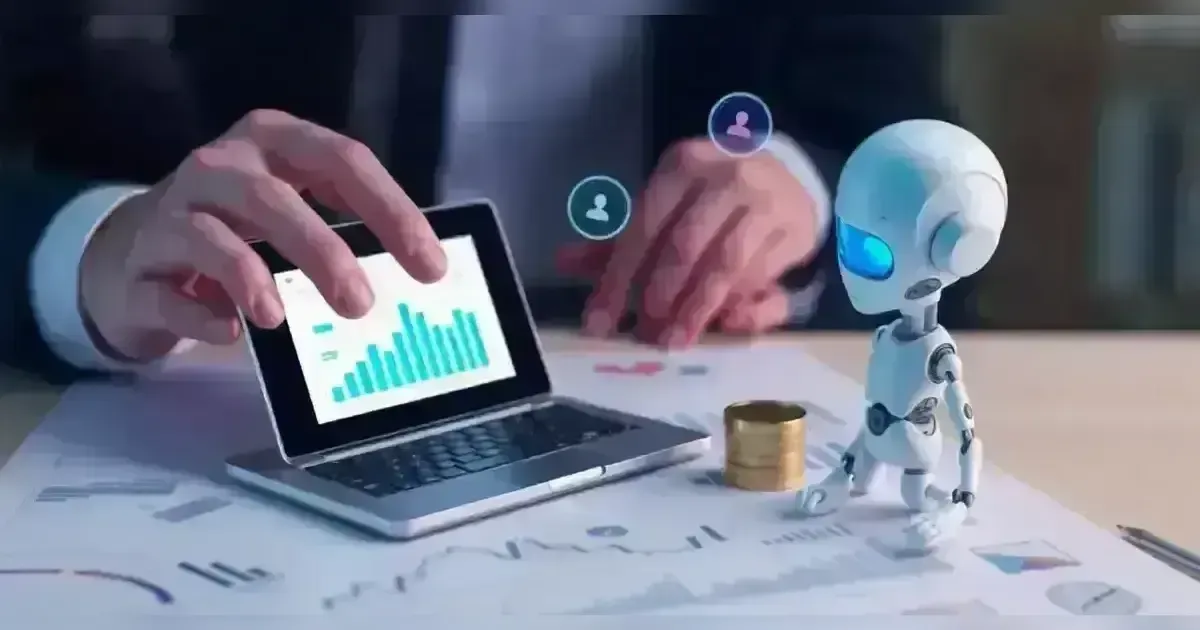Discover how cutting-edge innovations like AI, sustainable models, blockchain, and customer-centric strategies are shaping the future of business. This article explores how forward-thinking companies embrace agility, workforce development, and transparency to stay resilient and competitive, offering a blueprint for future-proofing in an ever-evolving industry landscape.
Introduction.
In the modern dynamic global environment, companies are challenged and potentially benefited by a number of factors such as technological growth, changes in climate and climate policies, and the development of societal norms. As volatility and uncertainty gradually redefine companies’ competitive environments, conventional methodologies for defining business strategies fail to deliver sufficient value. The urgency to prepare businesses for what is yet to come has emerged as the top priority for many leaders who need solutions that would enable them to both survive today’s disruptions and successfully fashion the world of tomorrow. Future proofing is therefore the ability to cultivate a completely new mental attitude that is tolerant of change and innovation in preparing a firm to adapt and form a strategic platform with which to dynamically change in its environment as it seeks to compete and partner with counterpart firms in the complex dynamic global market environment.
This article explores disruptions and transformations that enable proactive corporations to stand firm, sustain, and ensure market relevance. Each of the areas presented here shows how contemporary corporations are using technology and changing organizational practices to thrive in a world that is rapidly becoming digital, sustainable, and customer-oriented with rapidly developing values. Of these transformational forces, it becomes possible for companies to capture the possibilities for growth, innovation, and purposeful leadership over the next decade.
1. Digital Transformation: Adopting AI, Big Data, and Automation.
Digital transformation continues to be an issue of lasting relevance pursuing generelastic transformation, and artificial intelligence (AI) has established itself as an influential actor that realigns industry dynamics. The use of advanced technologies such as AI heavily relies on the use of data and provides unmatched information in real time to make adjustments based on current business processes and customer consumption. From using AI in manufacturing for monitoring equipment to using it in retail for offering highly personalized product recommendations, AI is a must-have for companies struggling to remain relevant against their business rivals. Through the help of the ML, NLPs, and DL, business sectors can eliminate vast undertakings, unveil customer conduct and patterns, and construct wise frameworks in organizations.
Big Data and predictive analytics are further afield, lying outside of traditional SAP enclaves and enhances digital advancement, providing clients with a superior and consequential market insight. Through data analysis, extensive data enables the business to predetermine trends, consumer needs shifts, and changes affecting its operations. For instance, in areas such as healthcare and finance, predictive analytics are used to act in advance as defence mechanisms in managing risks that are in turn form a circular business structure. On the other hand, automation is changing work processes through the process of substituting employees’ activities through automation systems where they are challenged to offer more valued contributions. In combination AI, big data, and automation form the cycle of digital transformation that helps companies to stay adapt, productive, and customer-oriented.
2. Sustainable Innovation: A few of the most influential top-quality eco-conscious business models you should know about now.
With climate change affecting the world and the awareness of planet’s well-being on the rise, companies are under pressure to minimize the negative impact... Environmental accountability is not only an imposed fact but a valuable standard that is expected by consumers, investors, and communities. Sustainable innovation, therefore, does not stop at mere ‘green’ activities – it also means overhauling existing business models to be carbon-free, obtaining resources optimally, and disposing of waste minimally. These goals prove that businesses today are concerned with the well-being of society today by pledging to sustainable development and the alteration of methods to become environmentally friendly while still making good profits.
To name just one: there is a shift from a linear to a circular economic model that requires companies to design their products for use, for repair, and for recycling instead of for disposal. These changes reduce extraction of resources and the generation of wastes, hence establishing a closed loop system that is close to the heart of environmentally conscious consumers. Business also continues to drive sustainable product development by achieving alternatives to hazardous global materials as well as implementing environmental solutions in the product cycle. By such ideas, corporations not only decrease the company’s negative impact on the environment but also transform operations as a sustainable approach to long-term ecological goals and learning what consumers want in today’s world.
3. Agility and Adaptability: Managing fast market changes is another business challenge, and this paper addresses this problem based on the findings presented above.
It has become critical for enterprises to adapt to change when the world is changing so fast by introducing newer technologies and consumers’ preferences. There is one characteristic that outlines the concept of a business model – agility, the company’s capacity to be flexible, quick to adapt to the changing landscape and seize opportunities or, conversely, avoid potential threats. To this end, organizations are dismantling vertical silos of power/authoritative control and thus decentralizing formal teams, enabling the employee to function in creative, consultative, and adaptive networks in real-time. All of this creates a very flexible foundation for how companies approach dealing with hardships and shifts in the market and builds a strong foundation for following the right path to sustained success.
The change towards agile business models has even affected the workforces as well where employees continue to work in their organizations in both the office and remotely. Such flexible structures are supplemented by digital communication instruments that enable the constant exchange of information and thus businesses to operate without a significant focus on the geographic location of the employees or contractors. Also, several organizations are incorporating the learning organization, which is an organization in which learning is the key strategy and knowledge of the process. By cultivating a populace of adaptable workers for training, it is easier for organizations to capture a future that is shrouded in uncertainty but one which demands flexibility and innovation.
4. Customer-Centric Innovation: Reinterpretation of Interaction and Individualization.
The expectation of the modern consumer is one that is targeted with service delivery that he or she finds socially appealing; therefore, customer centric is the way to market tomorrow. The incongruity of hyperpersonalization is that because of AI – and advanced analytics, consumer behaviour can be examined comprehensively and broken down into microsegments so that business propositions can be fine-tuned to specific markets. This is how companies can create experiences that would feel like a natural extension of the customer’s daily lives: It’s all about the C.He’s also an example of how important customer experience is in today’s hypercompetitive world, where the only way to create meaningful differentiation is through substantive interaction with the customer. It makes every engaging with the given brand to feel this is meaningful, so improving on the satisfaction level of the customer and fostering true participation in the long-term.
Aside from the increased emphasis on personalization, stability of omnichannel customer experiences of enterprises integrating digital and offline contact points. What this means is that the moment customers deal with a brand via an app or website, social media, or physically at the store, they get a united experience. The integration of consumers into product development processes is also becoming increasingly popular as customer feedback loops and co-creation join the scene. In an attempt to maintain a competitive edge in a fast changing market, organizations must recognise and incorporate customers’ needs into their developmental processes so as to meet the expectations of consumers.
5. Blockchain and Transparency: Trust in Digitization of Transactions.
Blockchain system is no longer limited to digital currency and is becoming an enabler of change across industries through increased communication, safety, and honesty. In a world where trust is one of the most critical values, blockchain technology provides an open-source distributed ledger that eliminates the risk of fraud and guarantees the transfer of honest information. This capability is highly relevant not only for industries that are heavily relying on supply chains, as the blockchain technology enables such organizations to implement full traceability. FProd can provide full information and history of the product’s origin, how it was made and whether it is ethically sourced and made, placing information about the product’s authenticity, making the consumer more loyal to the brand.
The uses of blockchain technology encompass identity and data management for individuals so that they can own their information instead of companies. Blockchain can decrease the number of cases of fraud and identity theft and guarantee that digital transactions are both safe and effective. With the growing significance of digitalization throughout all industries, the implementation of blockchain technologies not only increases the level of safety but also becomes a key to building trustworthy relationships in the digital environment. When companies adopt blockchain, they are placing their organizations at the front lines of an emerging economy that is rooted in trust.
Conclusion.
Implemented automation and the use of artificial intelligence in business processes are the driving forces of redesigning the required workforce, and training for the vast portion of employment is becoming a prerequisite of creating adequate business bulletproofing strategies instrumental to the adaptation to future change. There are some positions that are getting replaced by robots, but in their stead, some new and interesting positions appear that need technical talent and flexibility. Organizations are investing in upskilling to gain employable skills for people and meet the requirements to employ breakthrough thinking, planning, and people skills. Most skills development measures not only enable employees to be relevant in the organization but also increase the organizational resilience since teams are ready to exploit available technologies.
In the growing process of automation of the labour force, there is pressure towards distinctilities aptitudes such as understanding, innovation, and solving – skills that robots fail to exhibit. Modern-organization-oriented companies are embracing such human-oriented skills and cultivating an environment that fosters innovation, teamwork, and flexibility. Realizing ideas at the center of system thinking consists of strategies that enhance a workforce development approach, which not only realizes talent management system and employee development as the best strategic human capital management for preparing organizational talent pipeline but also enables executives to develop business resources that are protective and productive for resilience and integrated organization with ready industrial readiness.


























